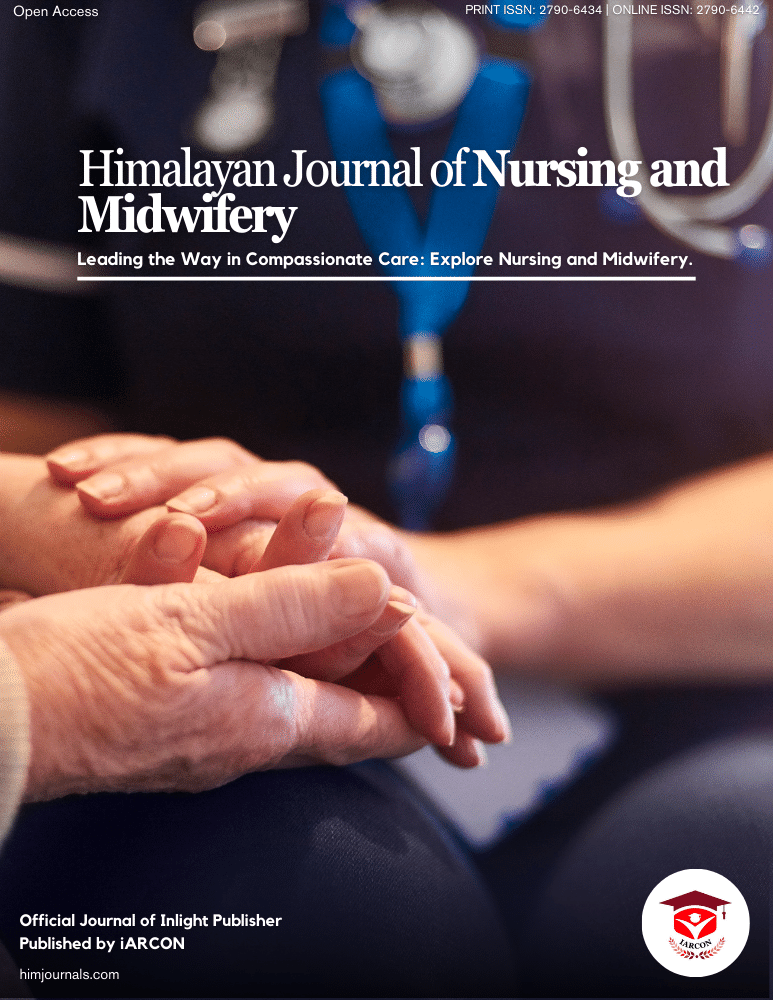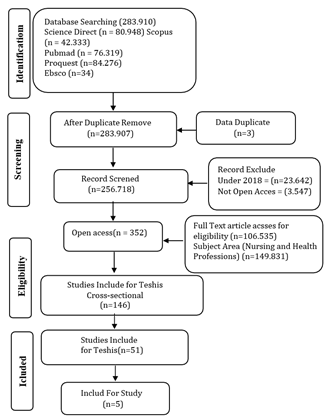Daneshzad, E. et al. “Hubungan antara kepatuhan terhadap diet Mediterania dan biomarker fungsi ginjal dan faktor risiko kardiovaskular di antara pasien diabetes dengan nefropati.” Clinical Nutrition (ESPEN), vol. 40, 2020, pp. 156–163.
Wajid, F. et al. “Therapeutic potential of melatonin as a chronobiotic and cytoprotective agent in diabetes mellitus.” Journal of Diabetes and Metabolic Disorders, vol. 19, no. 2, 2020, pp. 1797–1825. https://doi.org/10.1007/s40200-020-00585-2.
Gatina, J. and F. Legrand. “Tahun di perawatan primer di wilayah barat Pulau Reunion: Studi percontohan.” Primary Care Review, vol. 2, 2023, pp. 1–6.
El Masri, D. et al. “Barriers and facilitators to perceived diabetes self-management in Arab American patients with diabetes.” Primary Care Diabetes, vol. 14, no. 3, 2020, pp. 232–238. https://doi.org/10.1016/j.pcd.2019.09.002.
Grech, J. et al. “Helping smokers with diabetes quit: A scoping review of the interventions utilised and the challenges and barriers to smoking cessation.” Primary Care Diabetes, vol. 17, no. 2, 2023, pp. 119–128. https://doi.org/10.1016/j.pcd.2023.01.005.
Fitriyani. Faktor Risiko Diabetes Melitus Tipe 2 di Puskesmas Kecamatan Citangkil dan Puskesmas Kecamatan Pulo Merak, Kota Cilegon. Universitas Indonesia, 2012.
Langendoen-Gort, M. et al. “Patient-reported outcome measures for assessing health-related quality of life in people with type 2 diabetes: A systematic review.” Reviews in Endocrine and Metabolic Disorders, vol. 23, no. 5, 2022, pp. 931–977. https://doi.org/10.1007/s11154-022-09734-9.
Idorenyin Imoh, U. and T. Charity. “Cultural and social factors in care delivery among African American caregivers of persons with dementia: A scoping review.” Gerontology and Geriatric Medicine, vol. 9, 2023. https:// doi.org/10.1177/23337214231152002
Simon, T.G. and A.T. Chan. “Lifestyle and environmental approaches for the primary prevention of hepatocellular carcinoma.” Clinics in Liver Disease, vol. 24, no. 4, 2020, pp. 549–576. https://doi.org/10.1016/j.cld.2020.06.002
Suhartatik, S. et al. “Faktor-faktor yang mempengaruhi tingkat kepatuhan diet penderita diabetes mellitus.” Healthy Tadulako Journal (Jurnal Kesehatan Tadulako), vol. 8, no. 3, 2022, pp. 148–156.
Vallis, M. et al. “Understanding strategies to improve medication adherence among persons with type 2 diabetes: A scoping review.” Diabetic Medicine, vol. 40, no. 1, 2023. https://doi.org/10.1111/dme.14941.
Nørlev, J. et al. “Game mechanisms in serious games that teach children with type 1 diabetes how to self-manage: A systematic scoping review.” Journal of Diabetes Science and Technology, vol. 16, no. 5, 2022, pp. 1253–1269. https://doi.org/10.1177/19322968211018236.
Due-Christensen, M. et al. “Psychosocial aspects and perspectives of adult-onset type 1 diabetes: A systematic scoping review.” Diabetic Medicine, vol. 40, no. 5, 2023. https://doi.org/10.1111/dme.15073.
Elamurugan, K. et al. “Social inequities contributing to gestational diabetes in Indigenous populations in Canada: A scoping review.” Canadian Journal of Diabetes, vol. 46, no. 6, 2022, pp. 628–639.e1. https://doi.org/10.1016/j.jcjd. 2022.05.003.
Amsah, N. et al. “Biopsychosocial and nutritional factors of depression among type 2 diabetes mellitus patients: A systematic review.” International Journal of Environmental Research and Public Health, vol. 19, no. 8, 2022. https://doi.org/10.3390/ijerph19084888.
Biddle, G.J.H. et al. “Differences in objectively measured physical activity and sedentary behaviour between white Europeans and South Asians recruited from primary care: Cross-sectional analysis of the PROPELS trial.” BMC Public Health, vol. 19, no. 1, 2019, p. 95. https://doi.org/10.1186/ s12889-018-6341-5.
Burns, R.J. et al. “Dyadic associations between physical activity and body mass index in couples in which one partner has diabetes: Results from the Lifelines cohort study.” Journal of Behavioural Medicine, vol. 43, no. 1, 2020, pp. 143–149. https://doi.org/10.1007/s10865-019-00055-y.
Kayaroganam, R. et al. “Profile of non-communicable disease risk factors among nurses in a tertiary care hospital in South India.” Asian Nursing Research, vol. 16, no. 4, 2022, pp. 241–248. https://doi.org/10.1016/j.anr.2022.07.001.
Campbell, J.A. et al. “Examining the relationship between delay discounting, delay aversion, diabetes self-care behaviours and diabetes outcomes in U.S. adults with type 2 diabetes.” Diabetes Care, vol. 44, no. 4, 2021, pp. 893–900. https://doi.org/10.2337/DC20-2620.
Littman, A.J. et al. “Associations between racial and ethnic groups and foot self-inspection in people with diabetes.” Diabetes Care, vol. 43, no. 5, 2020, pp. 956–963. https:// doi.org/10.2337/dc19-1486.
Phitri, H.E. and Widiyaningsih. “Hubungan antara pengetahuan dan sikap penderita diabetes mellitus dengan kepatuhan diet diabetes mellitus di RSUD A.M. Parikesit Kalimantan Timur.” Jurnal Keperawatan Medikal Bedah, vol. 1, no. 1, 2013, pp. 58–74.
Hasyim, H. et al. “Analysis of COVID-19 preventive behaviour in diabetes mellitus patients: A literature review.” Kesmas: National Public Health Journal, vol. 17, no. 1, 2022, pp. 49–53. https://doi.org/10.21109/KESMAS.V17ISP1.6052.
Ghisi, G.L.D.M. et al. “Patient education for people living with diabetes in the Philippines: A scoping review of information needs, diabetes knowledge and effectiveness of educational interventions.” Diabetes and Metabolic Syndrome: Clinical Research and Reviews, vol. 16, no. 5, 2022. https://doi.org/10.1016/j.dsx.2022.102494.
Flanagan, E.W. et al. “Assessment of eating behaviours and perceptions of time-restricted eating during pregnancy.” The Journal of Nutrition, vol. 152, no. 2, 2022, pp. 475–483. https://doi.org/10.1093/jn/nxab397.
Yusuf Mohamud, M.F. and M.O. Omar Jeele. “Knowledge, attitude and practice regarding lifestyle modification among type 2 diabetes patients with cardiovascular disease at a tertiary hospital in Somalia.” Annals of Medicine and Surgery, vol. 79, 2022, 103883. https://doi.org/10.1016/j.amsu.2022.103883.
Manuntung, A. “Analisis keyakinan diri pasien diabetes mellitus tipe 2 dalam pengelolaan diabetes mellitus.” Jurnal Kesehatan Manarang, vol. 3, no. 1, 2018, p. 31. https://doi.org/10.33490/jkm.v3i1.32.


